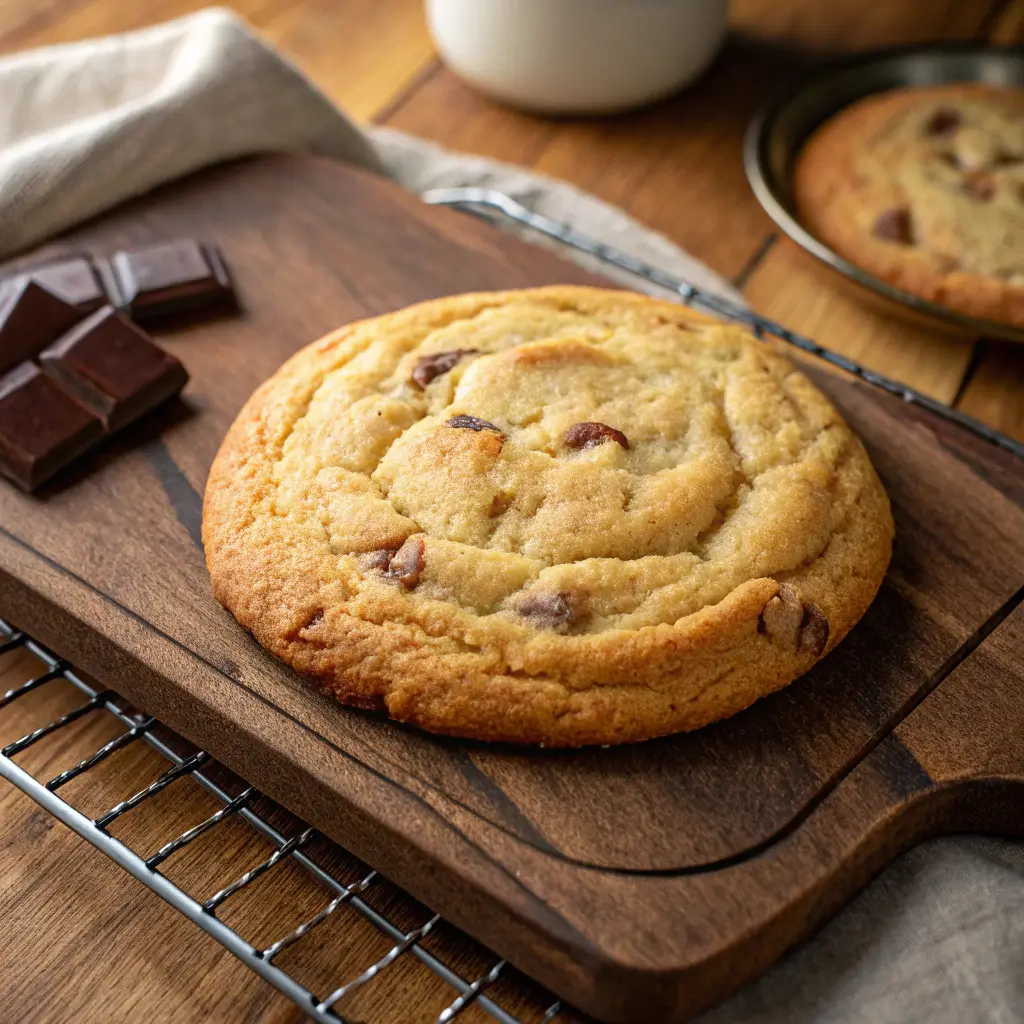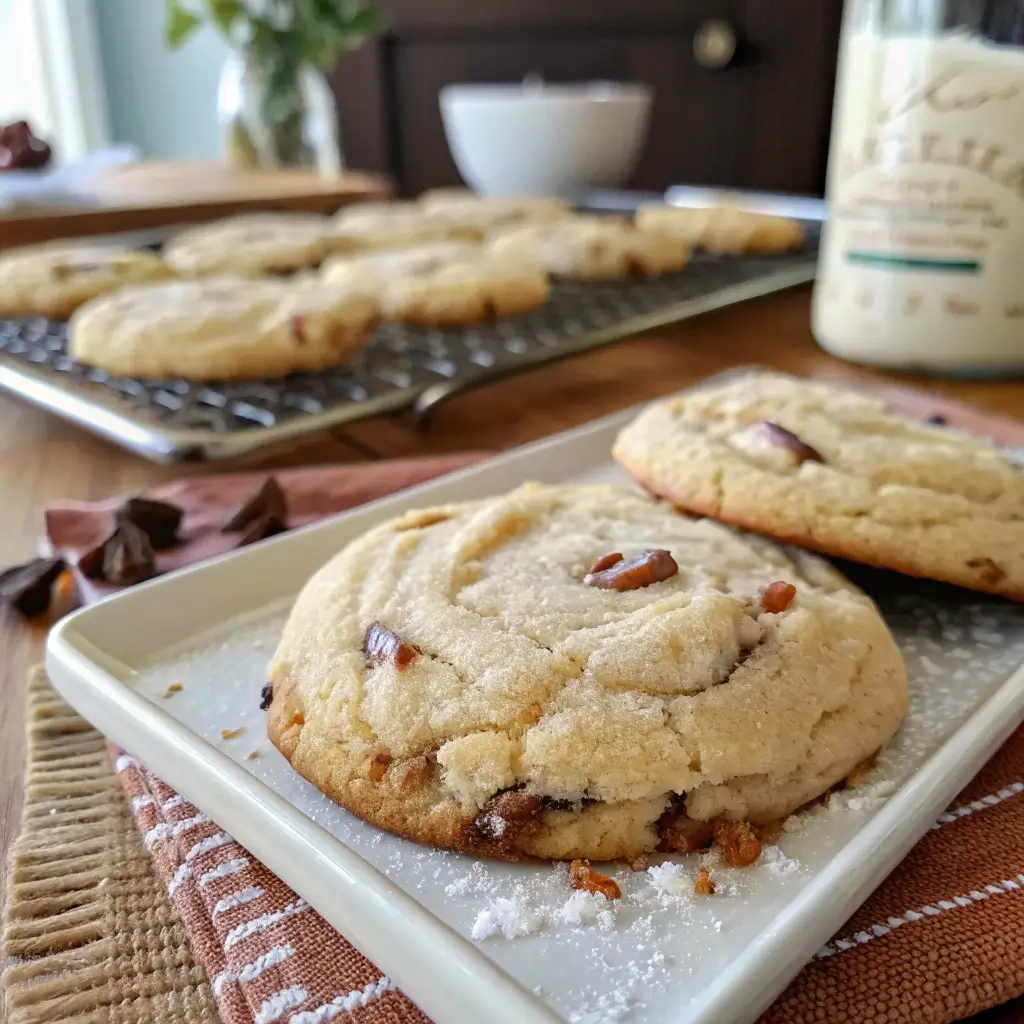
There’s nothing quite like biting into a cookie that’s perfectly fluffy—soft, airy, and full of delightful flavor. But what exactly makes a cookie fluffy instead of flat? While the answer may seem simple, achieving the ideal cookie texture requires understanding how ingredients, techniques, and even the tools you use come together. In this article, we’ll unravel the secrets behind fluffy cookies, explore common mistakes that lead to flat treats, and arm you with foolproof methods to bake your best batch yet.
So, whether you’re an amateur baker or a seasoned pro, stick around! From the science of leavening agents to the art of creaming butter and sugar, we’ll cover everything you need to know to master the perfect fluffy cookie.
Understanding Cookie Fluffiness
What Does “Fluffy” Mean in Baking?
Fluffy cookies are those that rise well, retain their softness, and have a light, airy interior. Unlike flat cookies that spread out too much in the oven, fluffy cookies maintain a plump shape, often with slight cracks on the surface that hint at their tender crumb. This texture isn’t accidental—it’s the result of precise ingredient ratios and baking methods.
When bakers aim for fluffiness, they focus on creating structure within the dough. Butter, sugar, and leavening agents all play vital roles in trapping air, which expands during baking, causing the dough to rise. The result? A beautifully soft and puffed-up cookie that practically melts in your mouth.
Flat vs. Fluffy: Key Differences
Ever wondered why some cookies spread like pancakes while others rise like little pillows? The difference boils down to a combination of ingredient science and baking techniques.
Flat cookies tend to spread too much during baking, leading to a dense, chewy texture. This often happens when:
- The butter is too warm or melted.
- The flour-to-fat ratio is off.
- There’s not enough leavening agent in the dough.
On the other hand, fluffy cookies are characterized by:
- The right amount of air whipped into the butter and sugar.
- A balanced ratio of wet and dry ingredients.
- Properly chilled dough that holds its shape in the oven.
Understanding these differences is the first step to crafting cookies that are soft and full of volume. By tweaking a few factors—like ingredient proportions and mixing methods—you can avoid flat, lackluster cookies and bake fluffy masterpieces every time.
The Role of Ingredients in Cookie Texture
Importance of Butter: Room Temperature vs. Melted
Butter isn’t just for flavor; it plays a significant role in determining what makes a cookie fluffy instead of flat. When butter is at room temperature, it creams beautifully with sugar, incorporating air into the dough. This air expands during baking, giving cookies a soft, fluffy texture. Melted butter, however, lacks this aerating ability and can lead to cookies spreading thin and flat.
Pro tip: To get the perfect consistency, let butter sit out for 30 minutes before creaming, or soften it slightly in the microwave. Avoid using butter that’s too warm—it’s a common culprit for flat cookies! Learn more about butter’s impact on baking in this helpful guide.
Sugar’s Impact: Granulated vs. Brown Sugar
Sugar is more than a sweetener—it also influences texture and spread. Granulated sugar creates crispier cookies that may spread more, while brown sugar retains moisture, yielding softer, thicker results. For fluffier cookies, a higher ratio of brown sugar to granulated sugar is often the key.
Why does this work? Brown sugar contains molasses, which helps trap moisture and prevent over-spreading. The result? Cookies that puff up instead of flattening out.
The Science of Eggs: Whole Eggs vs. Egg Whites
Eggs contribute both structure and richness to cookies. Whole eggs, with their combination of yolk and whites, provide balance. However, if you’re after extra fluffiness, consider using an extra egg yolk. The added fat from the yolk boosts tenderness, helping cookies rise instead of spread.
Egg whites alone can create a drier texture, so avoid skipping yolks entirely unless you’re experimenting with meringue-style cookies.
Leavening Agents: Baking Soda vs. Baking Powder
The choice of leavening agent is one of the most critical factors in what makes a cookie fluffy instead of flat. Baking soda creates a chewy texture by reacting quickly with acidic ingredients, while baking powder provides a slower, sustained rise.
For optimal fluffiness, consider recipes that balance both. A pinch of extra baking powder can make all the difference when aiming for a puffed-up cookie. For a detailed breakdown of leavening agents, visit Redpath Sugar’s guide.
Techniques for Fluffy Cookies
The Creaming Method: How to Whip Butter and Sugar
The creaming method is the secret weapon for fluffy cookies. By beating room-temperature butter and sugar together, you introduce air into the mixture. This creates a light, whipped base that serves as the foundation for your dough.
Tips for creaming perfection: Use a stand mixer or hand mixer and beat on medium speed until the mixture turns pale and fluffy—usually about 3 minutes. If you skimp on this step, your cookies might lack volume and structure.
Accurate Measuring: The Role of Flour and Its Proportions
Using the correct flour measurement is non-negotiable if you’re serious about fluffiness. Too little flour causes cookies to spread, while too much can make them dry and cakey.
Here’s a trick: Always spoon flour into your measuring cup and level it off with a knife. Scooping directly from the bag can pack the flour, leading to an excess. Precision ensures that your cookies have just the right balance of softness and structure.
Mixing Methods: Overmixing vs. Undermixing Dough
Mixing dough may seem straightforward, but technique matters. Overmixing can activate too much gluten, making cookies tough and dense. On the flip side, undermixing leaves streaks of butter or flour in the dough, which can cause uneven baking.
The solution? Mix just until ingredients combine, scraping down the sides of your bowl. This ensures even distribution without overworking the dough.
By mastering these techniques, you’ll avoid the pitfalls of flat cookies and consistently bake light, fluffy creations. Next, we’ll explore how tools and your baking environment can further refine your results!
Baking Tools and Environment

Using the Right Baking Sheet: Cool vs. Warm Sheets
Your baking sheet can make or break your cookies! A warm baking sheet causes butter to melt too quickly, leading to cookies that spread out before they have time to rise. To achieve a fluffy texture, always start with a completely cool baking sheet. This ensures the dough holds its shape longer, allowing the leavening agents to do their magic.
If you’re baking multiple batches, consider having an extra sheet handy so you can rotate between cooled ones. This small step can significantly impact what makes a cookie fluffy instead of flat.
The Impact of Oven Temperature on Cookie Texture
Oven temperature is another game-changer. Too hot, and your cookies will spread too quickly; too cool, and they won’t rise as much. Most recipes recommend baking cookies at 350°F, but you can experiment slightly by raising or lowering the temperature by 10°F to see what works best for your desired fluffiness.
To avoid uneven baking, invest in an oven thermometer to ensure accuracy. Many ovens run hotter or cooler than their settings indicate, which can sabotage your cookie goals.
Timing is Key: Baking Duration for Optimal Fluffiness
When it comes to what makes a cookie fluffy instead of flat, timing matters. Underbaking cookies ensures they stay soft and tender, but overbaking makes them dry and flat. Keep a close eye on your cookies, pulling them out as soon as the edges are set but the centers still look slightly underdone. They’ll continue to cook on the hot baking sheet after being removed from the oven.
For more delicious recipes, check out this guide to turning pancake mix into cookies: Pancake Mix Recipes Cookies.
Common Mistakes That Lead to Flat Cookies
Over-Melted Butter or Improper Cooling
Flat cookies are often the result of butter that’s too soft or melted. If your dough is too warm, it loses its structure before baking, leading to excessive spreading. Always chill your dough for at least 30 minutes before baking—especially if you’re working in a warm kitchen. This small step can be the difference between flat and fluffy cookies.
Skimping on Flour: Why Precision Matters
Using too little flour is another common mistake when aiming for fluffy cookies. Without enough flour to bind the wet ingredients, your cookies will lack the structure needed to rise properly. Always measure flour accurately by spooning it into your measuring cup and leveling it off.
Pro tip: If your dough feels sticky and hard to shape, try adding a tablespoon or two of flour until it firms up slightly.
Ignoring Room Temperature Ingredients
Cold eggs or butter can mess with the consistency of your dough, preventing proper mixing. Room temperature ingredients blend more smoothly, ensuring even distribution of air and moisture throughout the dough. This helps cookies rise evenly and stay fluffy.
By avoiding these pitfalls, you’ll be well on your way to baking cookies that look as good as they taste. Next, we’ll explore how to tweak recipes for even fluffier results!
Adjusting Recipes for Fluffier Cookies
If you’ve been wondering, “What makes a cookie fluffy instead of flat?”, the answer often lies in adjusting your recipe. Small changes to ratios and ingredients can create a big difference in texture. Let’s explore how you can modify your cookie recipe for a fluffier result.
Experimenting with Ratios: Flour, Sugar, and Fat
The right balance of flour, sugar, and fat plays a significant role in the final texture of your cookies. Increasing the amount of flour can help provide structure, but be cautious not to go overboard. On the other hand, if your cookies tend to be too dense, reducing the sugar slightly can help create a lighter, fluffier texture. Similarly, adjusting the fat content—such as using more butter—can result in a softer, puffier cookie.
Substitutions for Fluffiness: Yogurt, Cornstarch, or Cream Cheese
For even fluffier cookies, you can experiment with different ingredient substitutions. Adding a tablespoon or two of cornstarch can help soften your cookies and prevent them from spreading too much. If you’re looking for a tangy twist, substituting part of the butter with cream cheese can create a tender, airy texture. Yogurt, too, can work wonders by adding moisture and lightness to the dough.
Trying New Recipes: Tips for Customization
If adjusting the basic ingredients doesn’t get you the results you want, don’t hesitate to explore new cookie recipes that are designed for fluffiness. Look for recipes that call for cake flour, which is lighter than all-purpose flour and will contribute to a fluffier texture. Also, keep in mind that experimenting with oven temperatures and chilling methods may require minor recipe tweaks for the best outcome.
The Science Behind Cookie Textures
Understanding the science of baking is key to achieving the texture you desire. If you’ve been asking, “What makes a cookie fluffy instead of flat?”, the answer involves a mix of air, chemical reactions, and proteins. Let’s break down the science behind cookie textures to better understand how to get those perfect, fluffy cookies.
The Role of Air in Creating Height
Air is essential in making cookies rise and become fluffy. When you cream butter and sugar together, you’re incorporating air into the dough, which helps create a light texture. The air pockets trapped in the dough expand during baking, leading to a fluffier cookie. This is why the creaming method is so important when you’re aiming for soft, airy cookies.
Chemical Reactions: Baking Soda vs. Baking Powder Explained
Baking soda and baking powder are both leavening agents, but they work differently. While baking soda reacts with acidic ingredients like brown sugar or yogurt, it releases carbon dioxide to help the dough rise. In contrast, baking powder contains both an acid and a base, providing a more consistent rise throughout the mixture. Choosing the right one—or a combination of both—can make a noticeable difference in the fluffiness of your cookies.
Protein and Gluten: Their Contribution to Cookie Structure
Proteins in flour (gluten) play a vital role in providing structure to your cookies. However, too much gluten can lead to a dense, tough texture. This is why it’s important to avoid overmixing your cookie dough. Mixing for just the right amount of time will ensure that your cookies maintain a tender crumb while still holding their shape during baking.
Conclusion: Baking Your Best Fluffy Cookies
Achieving the perfect fluffy cookie doesn’t have to be a mystery. By understanding what makes a cookie fluffy instead of flat, you can adjust your ingredients, techniques, and tools for a lighter, airier texture every time. Remember, the right balance of flour, sugar, and fat, along with the perfect creaming method, plays a key role in fluffiness. Experiment with substitutions like cornstarch or cream cheese for even fluffier results. Don’t forget to master your oven temperature and mixing methods to avoid flat cookies.
Baking is all about trial and error—so don’t be afraid to experiment. Share your best results with friends and family, and enjoy the process of creating your perfect batch of fluffy cookies!

